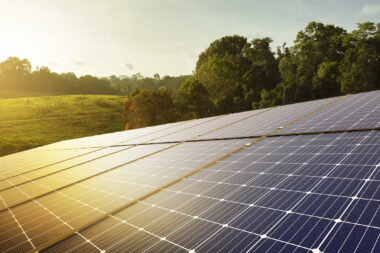Advancements in long-duration energy storage, which are crucial for the future utilisation of renewable sources like solar and wind, will be discussed at UNSW Sydney this week.
Emeritus Professor Maria Skyllas-Kazacos and her team at UNSW will host the 40th Anniversary Flow Battery Innovation Symposium, marking four decades since the groundbreaking invention of the vanadium redox flow battery (VFB).
Since the first 1kW vanadium flow battery was built at UNSW, the technology has evolved significantly, with systems now being installed internationally at capacities into gigawatt hour scale.
This scaling up of flow battery deployments signals a major shift in the global energy landscape, as countries turn to long-duration energy storage to support renewable power sources.
VFBs are gaining traction globally for their ability to provide safe, reliable, and long-duration energy storage. In contrast to traditional lithium-based batteries, flow batteries offer the advantages of being non-flammable, non-explosive, and highly scalable. This makes them an ideal solution for stabilising the grid in a renewable energy-driven future.
For Australia, this presents an exciting economic opportunity — not only to supply the growing global demand for vanadium and flow battery solutions, but to establish itself as a leader in the production and deployment of these technologies on a world stage.
The Symposium, taking place on 15-16 October, will bring together key players across the flow battery supply chain, including researchers, industry leaders, and government stakeholders, to promote understanding of the latest advancements, challenges, and opportunities presented by flow batteries.
Australia’s Opportunity as a Global Leader in Flow Battery Innovation
Australia is poised to lead the way in the development and manufacturing of flow batteries, particularly vanadium-based systems, due to its significant vanadium reserves and expertise in renewable energy technologies.
A quarter of the world’s vanadium reserves are found in Australia, making it a natural hub for both resource extraction and the downstream production of vanadium electrolytes and flow batteries. By capitalising on these resources, Australia can develop a domestic flow battery manufacturing sector that ensures both energy security and economic growth.
“The vanadium flow battery offers a unique solution to the energy storage needs of renewable sources like solar and wind,” said Professor Skyllas-Kazacos.
“Unlike traditional batteries, flow batteries store energy in electrolyte solutions, allowing for flexible and scalable energy storage at lower costs for long-duration applications.
“And Australia is ideally placed to become a major manufacturer of flow batteries, both for domestic use and for the international market.”
Symposium Highlights and Agenda
The Symposium will feature presentations and discussions that showcase current developments in flow battery technology, commercialisation efforts, and Australia's emerging leadership in the field. Topics include:
Market Opportunities in Australia: Exploring the growing demand for flow batteries in the Australian Energy Market, driven by the need for long-duration storage solutions.
Flow Battery Manufacturing in Australia: Highlighting efforts by local companies to establish domestic capabilities, including vanadium mining, electrolyte production, and battery manufacturing.
Government Policy and Support: Discussing the vital role of government investment and policy frameworks, such as the Battery Breakthrough Initiative, in positioning Australia as a global leader in energy storage.
The event will also feature insights from manufacturers planning operations in Australia, detailing how the country’s critical mineral reserves can fuel a thriving flow battery industry.
Contact details:
For further information or media inquiries, please contact:
Monica Brockmyre
[email protected]
0450 355 869



